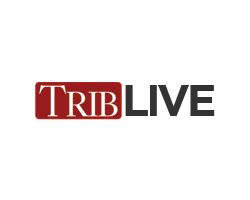David Zatezalo: Serving America's Miners Labor Day and Every Day

September 8, 2020 - As assistant secretary for mine safety and health, I know firsthand how miners across the country — more than 300,000 individuals — provide an essential service to our country. Miners work to extract, process and deliver the minerals, metal and coal that keep America working.
President Trump has been a champion for miners. The Mine Safety and Health Administration’s (MSHA’s) mission is to serve these individuals by ensuring they do not sacrifice life or health to get us the resources we need.
.jpg)
Coal miners listen as President Trump speaks at a rally Aug. 21. 2018 in Charleston, WV.
Photo: Getty Images
Leading up to Labor Day 2020, MSHA faced new and unprecedented realities in our ongoing efforts to keep America’s miners safe. Throughout the covid-19 pandemic, MSHA inspectors never stopped conducting mandatory inspections, including those initiated by miners. Since March 1, MSHA has received 158 complaints pertaining to covid-19 and issued 123 citations for positive findings under existing performance-based standards. We conducted outreach and stakeholder calls to make the most current safety and health information readily available, both covid-19-related and mining-specific.
Our inspectors and technical specialists have also continued to take health samples for coal and quartz dust, to confirm that miners’ lungs are protected from the consequences of overexposure. Black lung disease and silicosis have afflicted too many miners, and we will continue to work with mine operators to reduce exposure to harmful respirable dust and quartz. Through the end of 2019, MSHA sampling showed a record low number of overexposures, even as the number of valid samples increased. The Centers for Disease Control and Prevention, in the June 12, 2020 Morbidity and Mortality Weekly Report, announced that coal miners experienced a great reduction in pneumoconiosis deaths between 1999 and 2018, and that MSHA’s “Dust Rule” is expected to “foster continued disease mortality reduction.”
As we continue this important work, MSHA looks to further reduce exposure to hazards. Last year, we published a request for information on quartz dust exposure and, in particular, sought to ensure that current permissible exposure levels and methods of controlling quartz dust exposure are doing enough. MSHA continues to review the responses received and intends to move forward with a proposal that will do more for miner health.
MSHA’s mandate to prepare for emergencies while our preventive work has continued. Mine rescue competitions, training events in which mine rescue teams work to quickly resolve hazardous scenarios, are required for the mine rescue teams who must be present at each mine. At these competitions, performance is judged by mine safety and health experts (often from MSHA), and the competitions allow rescue teams from different mines to learn about new techniques and equipment that could result in better outcomes.
As the pandemic caused personal contact restrictions throughout the country, MSHA decided to come up with creative ways to ensure miners were still receiving crucial training. MSHA conducted its first semi-virtual mine rescue meet, during which competitors solved the scenarios in their own training areas with cameras positioned so that judges could observe their technique and progress. The event was successful and allowed our mine rescue experts to identify ways to improve the experience to provide an equally beneficial experience as in-person events.
Mine rescue teams will continue to be better trained and more capable of handling emergencies thanks to the knowledge they attain at these events, and MSHA will not let miners down when it counts the most.
Powered haulage safety is still high on MSHA’s list of priorities, and is frequently addressed in our outreach efforts. The incredible variety of vehicles used in mining, and the massive size of many of these vehicles, present unique challenges to miner safety. We have achieved substantial improvements by working with mine operators to review their policies and procedures regarding haulage vehicles.
In these historic times, MSHA is committed to finding new and dynamic ways to improve the health and safety of America’s miners. The most valuable resource for the mining industry isn’t anything taken from the ground. Miners are the most valuable part of mining. When challenges arise that threaten their health and safety, MSHA must continue to serve miners with our very best results, as we always strive to do.
David G. Zatezalo is assistant secretary of labor for the Mine Safety and Health Administration.

